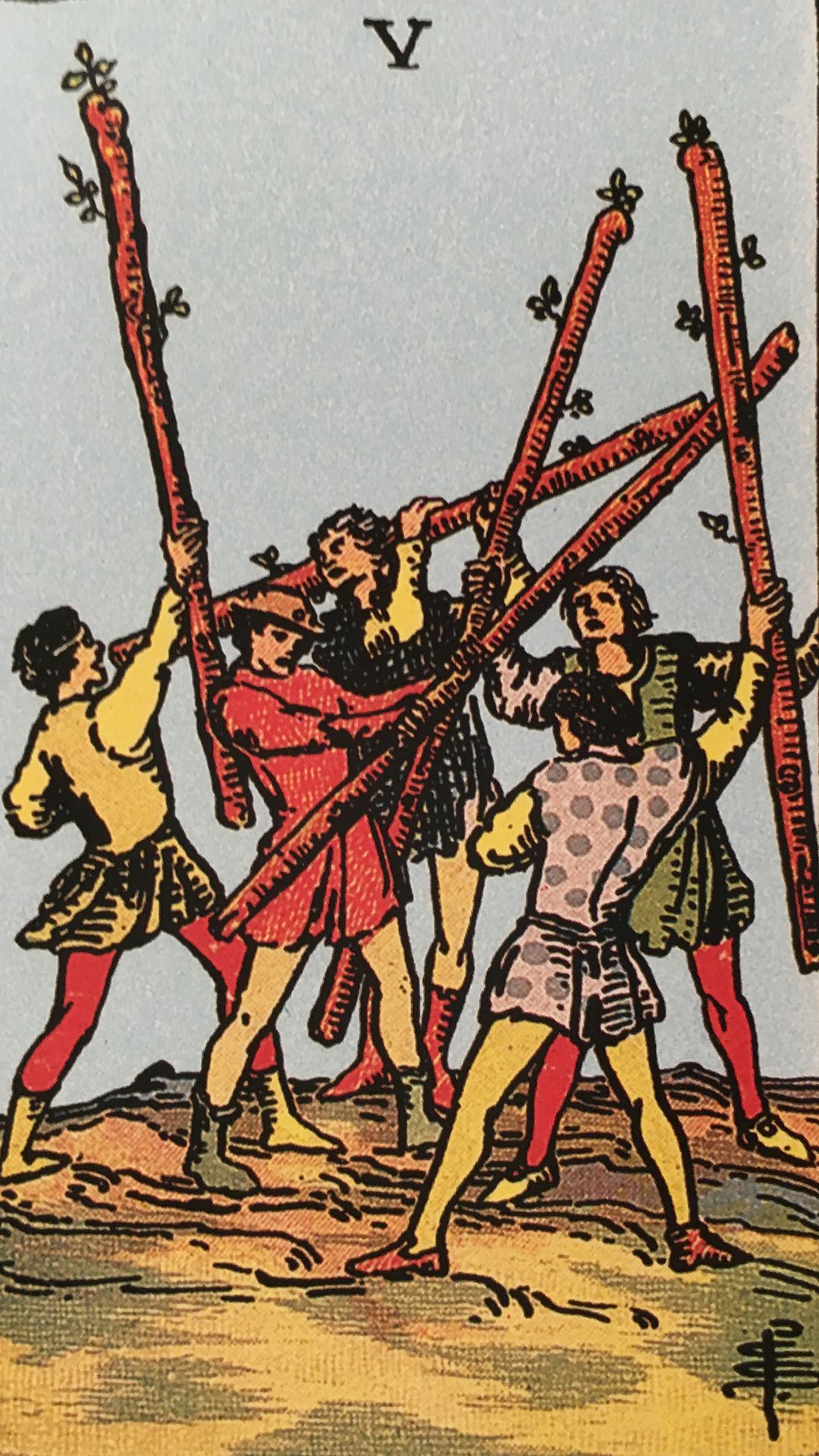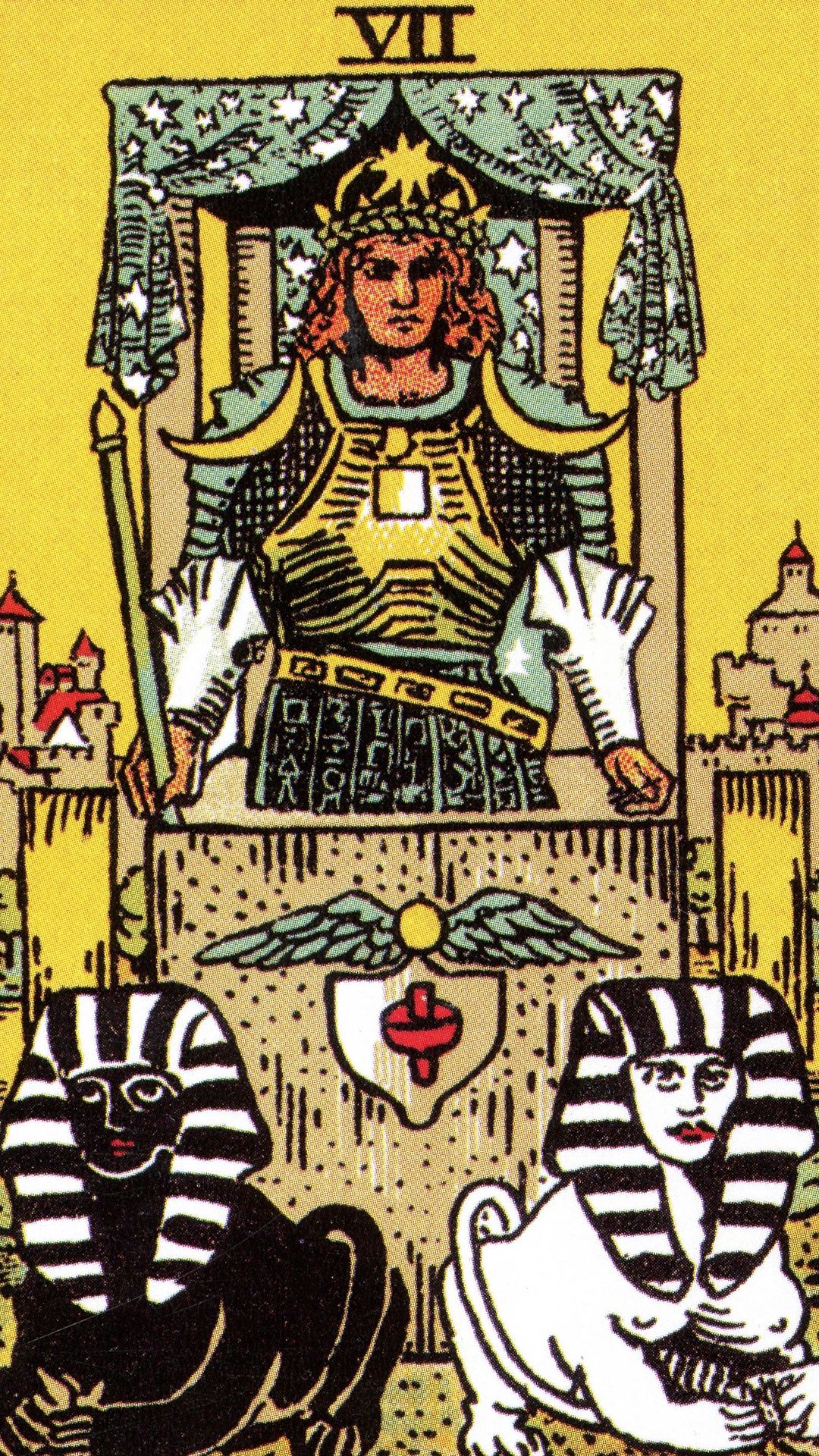Combination of card Five of Wands and card The Chariot
The Chariot and Five of Wands cards create a dynamic mix of movement and competition. Your life right now feels like an obstacle course race: the pace is intense, and competitors are breathing down your neck. But you're not just a participant – you're a serious contender for the win. This combination often appears for those launching a startup in a crowded market or fighting for a promotion in a company with cutthroat internal politics. The key is to keep pushing forward and maintain your grip on the wheel.
Combination of reversed card Five of Wands and card The Chariot
The upright Chariot with a reversed Five of Wands suggests you're racing towards your goal on a cleared path. Conflicts are dying down, and rivals are backing off. Perhaps you've found a workaround or simply learned how to navigate around the sharp edges. This state is familiar to seasoned diplomats – people who can move forward without unnecessary drama. You're not wasting energy on petty squabbles but channeling it where it counts.
Combination of card Five of Wands and reversed card The Chariot
The reversed Chariot with the upright Five of Wands is like having your engine stall in the middle of a race. Competition rages around you while you've lost control. Rivals are overtaking you, colleagues are bickering, and you're caught in this chaos without clear direction. This scenario is typical for newcomers in highly competitive markets or managers suddenly thrust into corporate politics. Without a solid strategy, you're not getting out of this mess.
Combination of reversed card Five of Wands and reversed card The Chariot
Both cards reversed signal a lull that borders on stagnation. There's no movement, no struggle – just drift. Life floats by on autopilot, like an old boat drifting in calm waters. Sometimes this points to a comfort zone that's become a gilded prison. Think of someone who's been stuck in a mediocre job for years, turning down promotions out of fear. Sometimes the absence of conflict is more dangerous than any storm.

